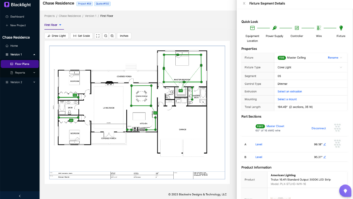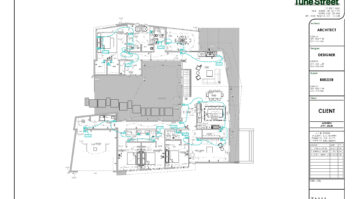Custom installers often like to joke about W.A.F.–the “Wife Acceptance Factor.” W.A.F. comes into play when the “lady of the house” feels that the installation of certain technological items impedes on the home’s interior design scheme.
While the W.A.F. is probably the most politically incorrect way of expressing it, this phenomenon is undeniable. If wives–and husbands, partners, roommates, children and other residents–think a proposed A/V installation is going to look ugly, chances are an installation firm is going to lose the sale. However, custom installers who recognize the importance of tastefully incorporating technology into a home will no doubt reap the benefits of their attention to dcor. “It is probably the paramount factor in enabling us to put the technology into peoples’ homes,” said Bill Anderson, president of Genesis Audio & Video Inc. (949.727.3700 www.genesis-audio.com), a custom installation firm in Irvine, California. “The collaboration with the interior designer to incorporate the technology into nice and easy lifestyle settings and making the technology invisible is important.”
To facilitate a customer’s introduction to residential technology, Anderson encourages interior designers to bring their clients to the Genesis showroom, where they may view the technology in lifestyle settings. “We work very closely with interior designers,” Anderson said. “You need to work in conjunction with one another so that you are all on the same platform, delivering a finished look. We are not interior designers, but we can help in terms of mechanical specification so that they can then overlay their design and their finishes to make it work well and look good.”
Audio Advisors (561.478.3100, www.audioadvisors.com), a custom installation company in Florida’s elegant West Palm Beach area, recently constructed the Design Center, a home-within-a-store that showcases how well technology can be hidden in the home. Audio Advisors enlisted the services of Renaissance Interiors, a local interior design firm, to contribute to the project.
“There is always some level of compromise between what is optimum for what we do, and what is acceptable in terms of the cosmetics,” said Audio Advisors and CEDIA president, Jeff Hoover. “It is an integral part of what we do. I don’t think that you can be successful in business today unless you work with the interior designer as part of the process and not as an enemy.”
“The key is communication,” said Keith E. Davis, manager of engineering at Audio Video Design (617.965.4600, www.avdesigns.com), a custom installation firm operating out of Newton, Massachusetts. “You have to be open to what each other has to say and understand that the interior decorator has a job to do just like we do. We can compromise and meet in the middle and talk things out; that is where the greatest improvement to the relationship between custom installers and interior designers lies. I have done some projects where I knew the interior designer’s number by heart. It takes a lot of interaction.”
Ron Whitney-Whyte, FIIDA, CID, an interior designer working out of West Hollywood, California, acknowledges that the integration of technology into the home is one of the first things he covers with new clients. “It didn’t used to be, but it is one of the primary things that I discuss with clients during my initial interview with them,” he said. “It used to be ‘public space versus personal space’ in terms of what your priority was. Home theaters are rooms that are both public and private. I have some studio clients who might have a movie that is just hitting the theater, and if they show it in their home for a few people, it’s a major deal. I sit down with my clients and talk to them about everything from their computer to their TV and their music systems, the same as when I sit down with them about their bedroom and their master bathroom. Even if they haven’t thought about it, I like to get the process going.”
As residential systems continue to become more complex, so too will the construction or renovation process, Whitney-Whyte observed. “It’s always more of a challenge the more people that are involved,” he said. “It’s interesting that as technology increases, more people do have to be involved because the area of expertise becomes more finite. I have to rely so much more on more people now.”
Product manufacturers are making it easier in one respect; technology for the home is becoming more attractive. “It is easier to integrate the equipment into the home today,” Anderson said. In fact, his company is in the process of fabricating a device designed to hide plasma screens. “We have figured out a way to use a picture frame and have the canvas roll up into the frame when it’s not in use. With a wealthier client base, there is just no way that you are allowed to bolt plasma screens to the walls in certain rooms of the house. The interior design community has embraced this invention.” Anderson is planning to bring the product to market in the near future.
Although many homeowners still prefer that their technology remain hidden, people in general are growing more accustomed to having it around. “It is becoming more accepted,” Anderson said. “In the upper echelon, if it is visible it is considered obtrusive and ugly. But as we get better at our craft and we have more tools to work with, all of a sudden more doors are opened to us.”
Whitney-Whyte added, “It took a while for people to feel comfortable with, for example, the computer sitting out. It’s almost like a piece of furniture now.”
Carolyn Heinze ([email protected]) works from her media firm, Punchface Propaganda Machine.







